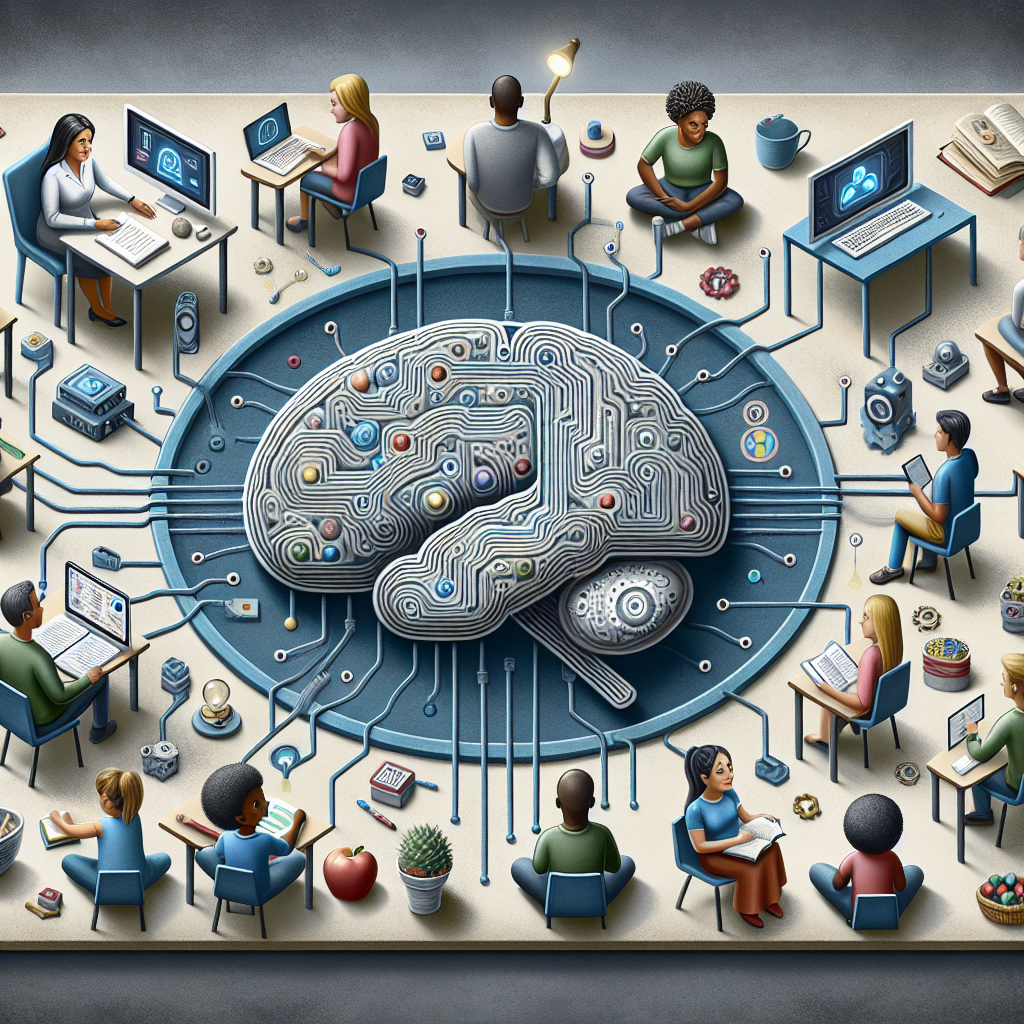The Role of AI in Addressing Learning Gaps
In today’s rapidly changing world, the importance of education cannot be overstated. However, not all students have equal access to quality education, and many face learning gaps that can hinder their academic progress. This is where artificial intelligence (AI) comes in, offering a powerful tool to help address these learning gaps and provide personalized learning experiences for students.
AI has the potential to revolutionize education by providing personalized learning experiences tailored to the needs of each individual student. By analyzing vast amounts of data, AI can identify patterns in students’ learning behaviors and provide insights into their strengths and weaknesses. This allows educators to design customized learning plans that address each student’s specific needs and help them reach their full potential.
One of the key benefits of AI in education is its ability to provide immediate feedback to students. Traditional education systems often rely on standardized testing to assess students’ progress, which can be time-consuming and may not provide a comprehensive view of their learning abilities. AI, on the other hand, can provide real-time feedback on students’ performance, allowing educators to intervene quickly and provide the support they need to succeed.
AI can also help educators identify and address learning gaps more effectively. By analyzing students’ learning patterns, AI can pinpoint areas where students are struggling and provide targeted interventions to help them overcome these challenges. This personalized approach to learning can help students build confidence and motivation, leading to improved academic outcomes.
Furthermore, AI can help educators track students’ progress over time and adjust their learning plans accordingly. By continuously monitoring students’ performance and adapting the curriculum to meet their needs, AI can help ensure that no student falls through the cracks and that all students receive the support they need to succeed.
In addition to personalized learning experiences, AI can also help educators create more engaging and interactive learning environments. By using AI-powered tools such as virtual reality and gamification, educators can make learning more fun and immersive, helping students stay motivated and engaged in their studies.
One example of how AI is being used to address learning gaps is in the field of language learning. Language learning can be a challenging process, especially for students who are not exposed to the language regularly. AI-powered language learning platforms can provide personalized lessons tailored to the individual needs of each student, helping them improve their language skills at their own pace.
Another example is the use of AI in math education. Many students struggle with math concepts, and traditional teaching methods may not be effective in helping them overcome these challenges. AI-powered math learning platforms can provide personalized exercises and tutorials that target specific areas where students are struggling, helping them build a strong foundation in math and improve their overall academic performance.
Overall, AI has the potential to revolutionize education by providing personalized learning experiences, identifying and addressing learning gaps, and creating more engaging and interactive learning environments. By harnessing the power of AI, educators can help all students reach their full potential and ensure that no student is left behind.
FAQs
Q: How does AI personalize learning experiences for students?
A: AI analyzes vast amounts of data on students’ learning behaviors and performance to identify their strengths and weaknesses. Based on this information, educators can design customized learning plans that address each student’s specific needs and help them reach their full potential.
Q: How can AI help educators identify and address learning gaps?
A: AI can pinpoint areas where students are struggling by analyzing their learning patterns and performance data. Educators can then provide targeted interventions to help students overcome these challenges and improve their academic outcomes.
Q: Can AI help track students’ progress over time?
A: Yes, AI can continuously monitor students’ performance and adjust their learning plans accordingly. This helps ensure that all students receive the support they need to succeed and that no student falls through the cracks.
Q: How can AI make learning more engaging and interactive?
A: AI-powered tools such as virtual reality and gamification can help educators create more engaging and interactive learning environments. By making learning fun and immersive, AI can help students stay motivated and engaged in their studies.
Q: Are there any specific examples of how AI is being used to address learning gaps?
A: One example is AI-powered language learning platforms that provide personalized lessons tailored to the individual needs of each student. Another example is AI-powered math learning platforms that provide personalized exercises and tutorials to help students improve their math skills.

